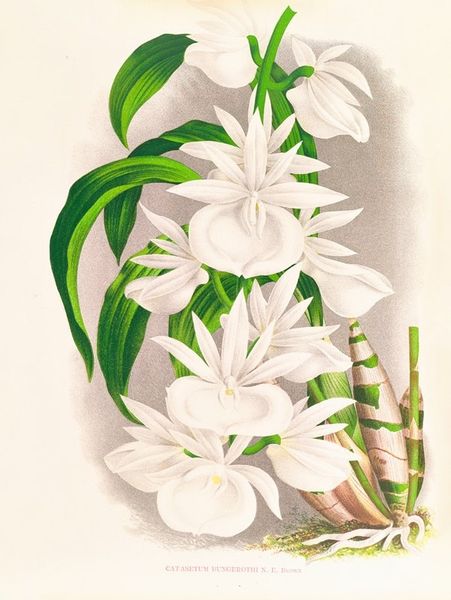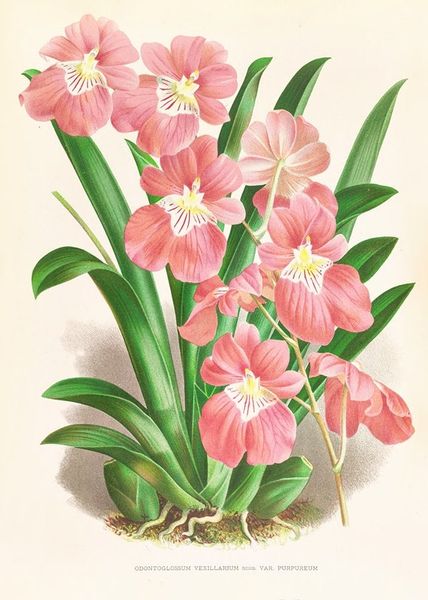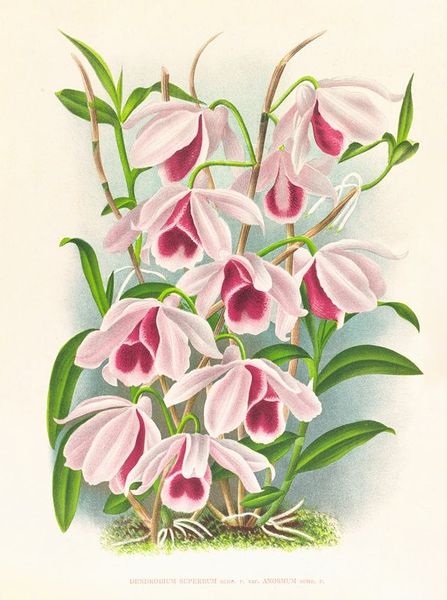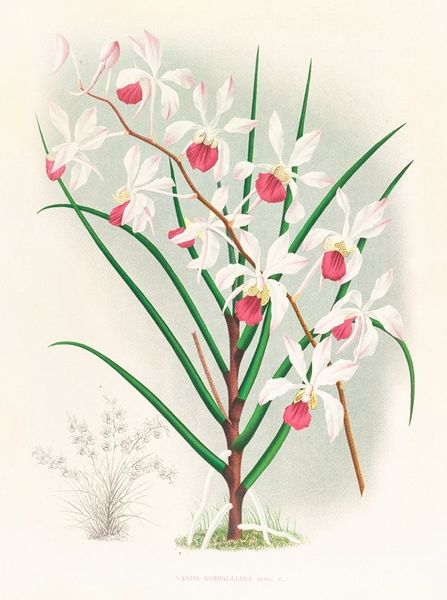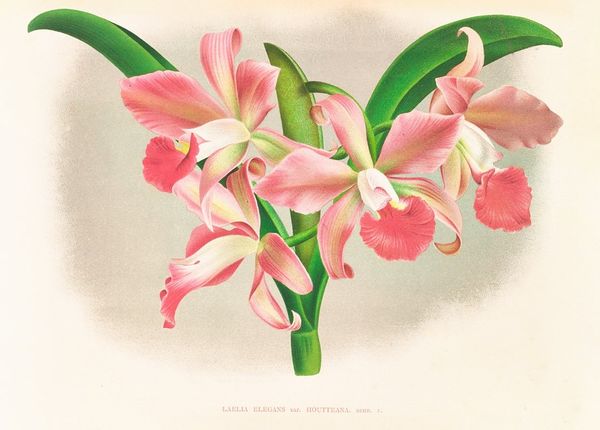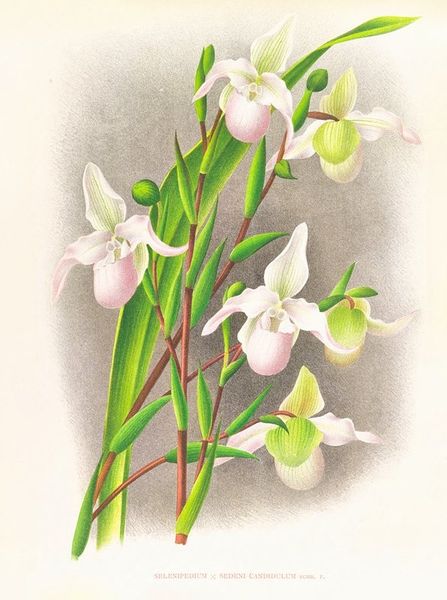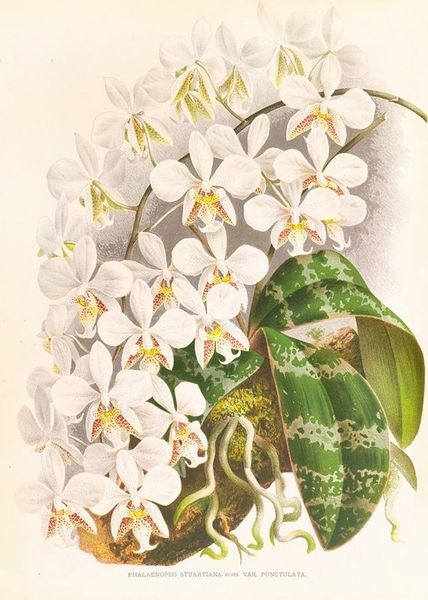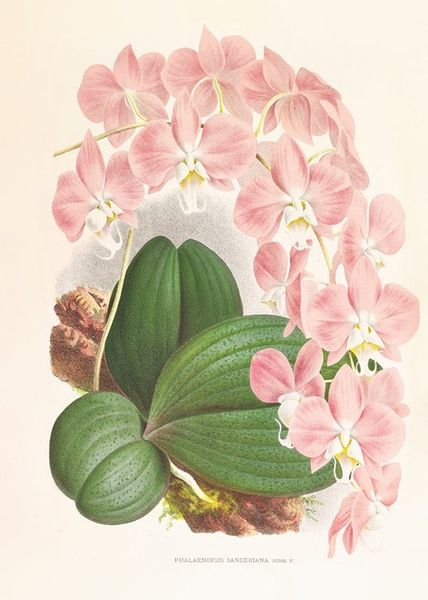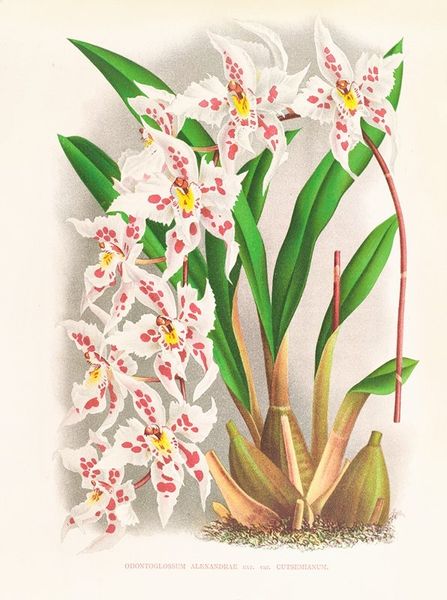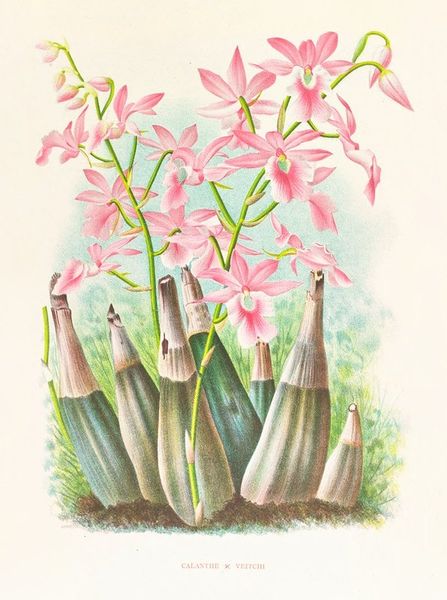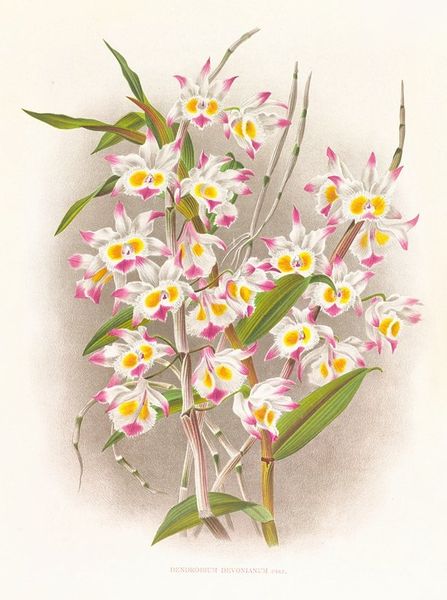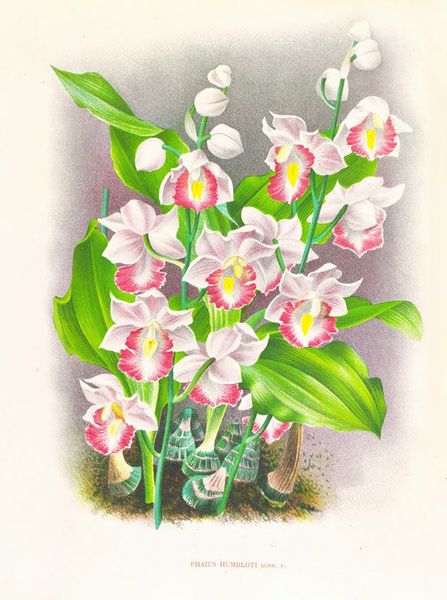
drawing, plein-air, watercolor
#
drawing
#
plein-air
#
botanical illustration
#
watercolor
#
food illustration
#
botanical photography
#
watercolour illustration
#
genre-painting
#
botanical art
#
realism
Copyright: Public Domain: Artvee
Editor: This is *Calanthe regnieri* by Jean Jules Linden, made sometime between 1885 and 1906. It’s a watercolor and drawing, and it feels very… scientific somehow. The detail is so precise, but it still feels delicate. What do you see in this piece? Curator: Beyond its botanical accuracy, I see layers of symbolism inherent in the image of an orchid itself. Historically, orchids often represent love, beauty, refinement, and even luxury, right? Given Linden's painstaking technique, I wonder if he's not just documenting a species but subtly commenting on the values attached to it by Victorian society. Do you pick up on any of that, considering the Victorian era fascination with collecting and classifying the natural world? Editor: That’s interesting, I didn’t think about the cultural weight orchids might have had then. The way the flowers are clustered feels very intentional. Curator: Absolutely. This 'intentionality' is key. Ask yourself, what does the very *act* of precisely depicting it communicate, and to whom? Could it suggest dominion over nature, a taming, through artistic representation? Look at the sharp contrast between the fragility of the blooms and the solidity of the bulbs; the Victorian era was also obsessed with juxtaposing the fragile with the monumental in architecture and literature, as a visual allegory for social and personal values and achievements. Editor: So the botanical drawing isn’t just about science; it’s loaded with cultural meanings and the values of that time? Curator: Precisely! The Victorian penchant for "floriography", where the very arrangement and species of flowers carried distinct emotional and social messages. We need to question if *Calanthe regnieri* is also part of that cultural phenomenon. How might Linden have perceived or challenged those established symbolic associations? Editor: This has definitely shifted my view. I now see it's a record of both the flower itself and the values placed upon it during its time. Curator: Indeed, It enriches how we understand visual and social memory contained in this image, isn’t it?
Comments
No comments
Be the first to comment and join the conversation on the ultimate creative platform.

